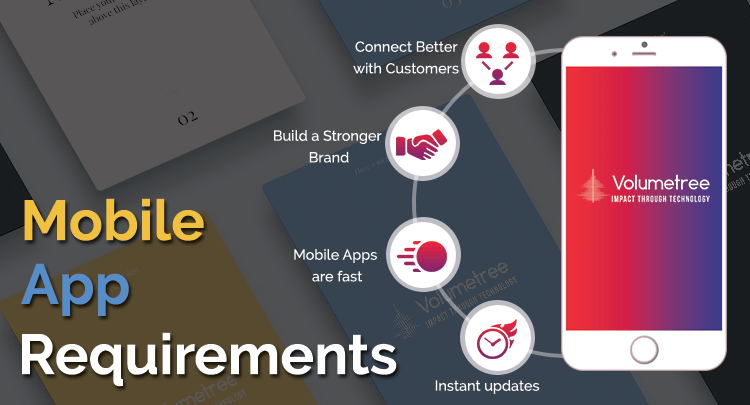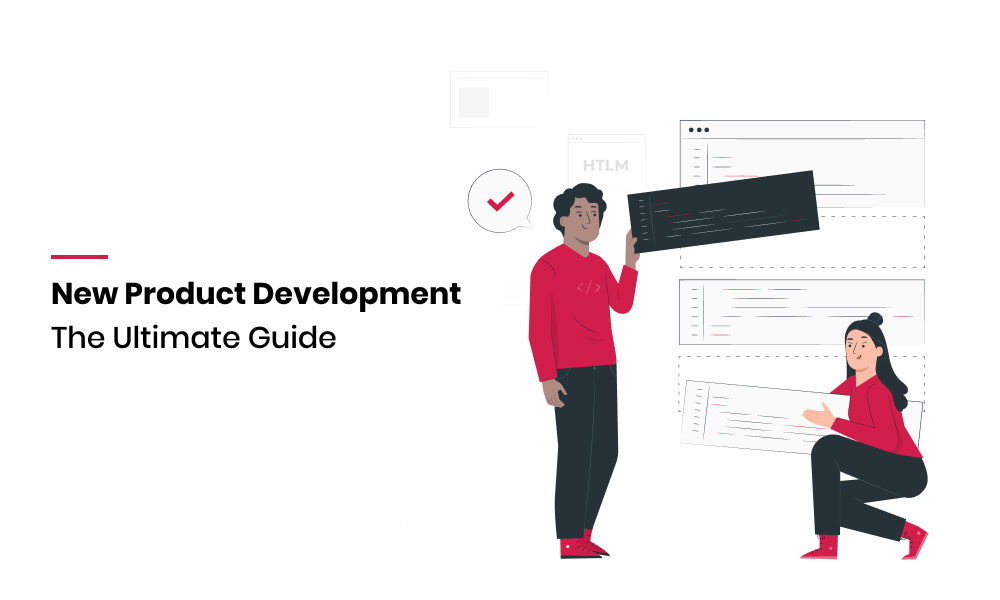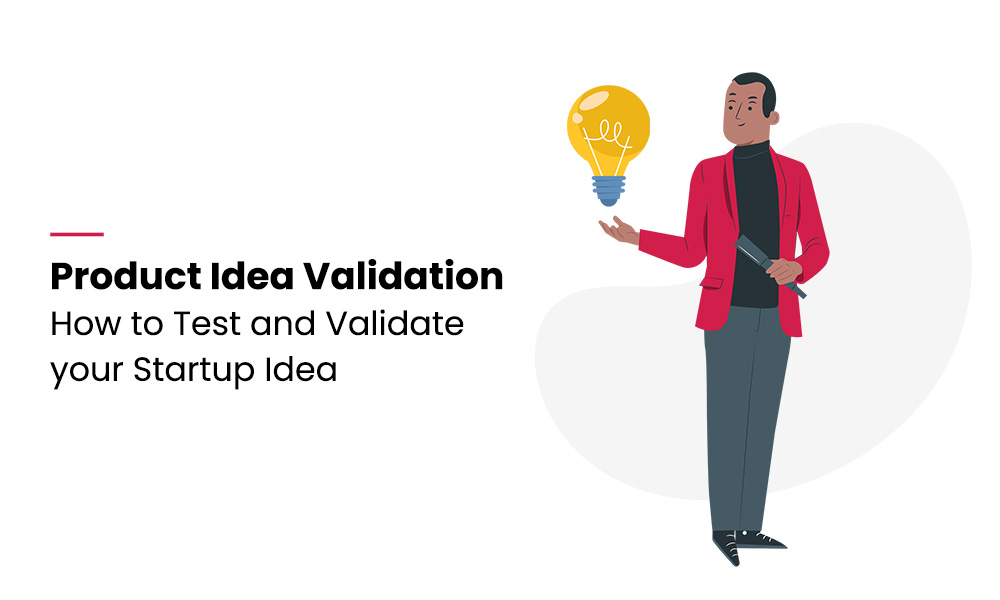The world of today revolves around mobility. As more and more users join the mobile bandwagon, mobiles have become a part of our lives and are indispensable today. From daily alarms to meeting reminders to messaging and e-mail, literally, every aspect of our lives is impacted by mobile devices.
As these devices and their wearable accompaniments get smarter by the day, there is a horde of applications that accompany these devices to make your lives easier. According to statistics available from Apple, nearly 180 billion app downloads have been completed from their app store alone! The number of apps has also been increasing rapidly and in 2018, there were over 3 million apps to choose from in the Android Play store.
With such staggering numbers of options, users and devices, it is important to understand that not every app aspires to get the usage it desires. It takes a lot of effort and research to understand what users look for in an app. While many app development companies just clone popular apps and hope to succeed, there are many companies that create groundbreaking products that people wish to use daily. These apps generate revenue for the app maker as the number of users an app has increased.
What does it take to make it big in the mobile ecosystem?
Along with just plain good luck, being at the right place at the right time, great marketing and app quality and uniqueness, there are many other factors that may determine your success or failure in the mobile marketplace.
As the user age band of these devices has a huge range, apps need to find their sweet spot and do what it takes to succeed. But what does it really take to succeed in this marketplace that is already seemingly saturated with apps? What is interesting is that a handful of apps take up about 80-90% of the download pie, the rest being distributed amongst the millions of apps that throng the marketplace.
Here is a handy guide that will help both aspiring developers ready to take the plunge into the iOs-osphere or android-osphere and app developers that need to ensure the success of their existing apps. This, however, is not your usual 5-step guide to gathering requirements for a good product. You can find those on the first page when you search for the title of this blog. The purpose of this guide is to dig deep and understand what goes wrong when companies do not research thoroughly or lack the acumen to know where to start.
Gathering requirements by research – the need to research
Research is of the utmost importance while creating a mobile app or nearly any software. What matters more in the case of a mobile app is the ability of users to move on. Users can download an app, check if it suits their requirements and quickly move on if it does not. Requirement analysis is not a process that takes a day or a finite amount of time.
Adequate research will always result in an app that fares much better than apps that are not well-researched. While nearly every website on the internet can tell you what you need to gather requirements for a mobile app, not many get into the nitty-gritty and really understand what it takes to create an outstanding app. Outstanding apps are not created, they are envisioned and thoroughly researched.
In order to build an outstanding app, the creators need to visualize what an outstanding app looks like. For most companies or app developers, this would mean creating something that is either immensely profitable for them or that it solves a very particular business problem.
You can read out here how you can create a perfect mobile app.
Defining a business need – your primary business goal
There is a large pool of now-defunct startups that had a wonderful product, had a wonderful user experience but lacked the fundamental understanding of their business need and hence were not able to make enough money to survive.
This single, most important aspect of your startup will drive your company to success. A company will only be able to make better products if they have a fundamental understanding of the business need behind it. Start by defining an achievable and quantifiable business goal for your team.
Many companies fail to reach their goals for one of the following reasons:
- Their goals were not prioritized.
- Their information propagation and communication about the goal was not enough.
- They decide to give up instead of rebooting and reiterating
- They did not make a quantifiable plan to reach their goal
- They did not allocate enough time for what really matters.
Understanding the needs of your prospective users and their behavior
Who is your user? What is the behavior that will make an individual the user of your product? Although many companies do extensive research on user groups and personas to find the most optimal control set that they can use to emulate their actual user base. Although that is a good approach, but we humans are all created differently.
If I create an app for parenting, the first thing that comes to my mind as user personas are fathers or mothers. The problem with this approach is – no two users are alike. Imagine your own mother and the mother of a person in a different city. Would it be possible for you to build a must-have feature for both moms at the same time?
Probably not. Building a feature for moms and dads is probably the same as building a feature for everyone. If your app tries to please everyone, it will most likely end up not pleasing anyone.
Creating a product for a very specific audience with a problem that they share is more likely to gain traction than a generic app because a niche market can sometimes be the starting point for a large conglomerate.
Take the example of Facebook, which was initially created for Harvard students. It took two years before Facebook started letting non-university users in, but it used those two years to gain traction within universities – a very small and niche segment that not many had catered to earlier.
In the same way, it takes a long time before you can figure out something that is useful for a very large segment of society and it is of the utmost importance to stay focused until you do so. This calls for pattern analysis. Once you can figure out and isolate patterns from user segments, you can then build a product for one of the use cases from the common group and then focus on it.
The question you need to be answered here is – what the features are and use cases that will compel this small segment of users or this individual buy your product? This will also reduce the number of questions you need to ask those users to figure out their pain points.
In short, you should strive for a fabulous product for a small set of unique users rather than a mediocre, run-of-the-mill product for a lot of users. This will help you grow quickly and retain those users. Once those users are retained, you can then start branching out and exploring other avenues that these users might be interested in as features.
As an example, an app dedicated for Asthma patients that are using inhalers will quickly gain traction compared to an app for pulmonary disorders. The latter can then be a superset app for a collection of other apps around the same pain point.
Getting to prospective users: Research
A problem that most app developers face is the inability to do proper research. Non-researchers will often pick the wrong research methodology and end up talking to the wrong people for the wrong product. Most individuals resort to coffee-shop research, in which they end up talking to anyone they find and try to pitch their product to them.
The chances of finding the right user on the street for your product is next to none, and unless you’re selling smart umbrellas on a rainy day, we d not see it going anywhere.
Figure out the most important question that you wish answered. This is what you wish to learn. You wish to learn about problems. Typical examples of a home services app could be:
- Why do people uninstall my app as soon as they get to my registration section?
- What how many new users use my app to do a particular chore?
- Can people successfully find a listing that they need using the new UX design of my app?
These are answerable questions. Questions that have actual responses from people who might need them daily.
There might be many methodologies you might wish to employ for such research, but these are answerable questions that will let you determine who to recruit for this study and you will also be able to come up with a set of relevant questions for this study.
You can read here how you can build up your app marketing strategy.
This will also not involve asking users to design your product for you. Although you can use nearly any research methodology you find fit, ensure that it fits your requirements.
-decide if you wish to learn about your product or its prospective users
-decide if you wish to validate your idea or generate new ideas from the study
-decide if you wish to learn what is happening versus why it is happening
For learning about users, you might wish to conduct a contextual inquiry or do observational research along with customer development interviews.
For learning more about the product, you might wish to perform quantitative research or perform task-based usability testing.
You may choose the methodology that you find best-suited to the topic of your research so as to get the best results and answers that you seek.
Modifying user behavior to meet business and user needs
User behavior is often required to be modified to meet business needs. This is traditionally in the shape of new features. New features are the yardstick with which product success is measured. That, unfortunately, is not the right yardstick.
The right yardstick is understanding the factors that might point you in the direction of making the user more engaged with the product. Understanding user behavior to make the right changes or create the correct feature should be the first step.
This step will not limit your options to one feature someone thought up and it will help you start from the metric you wish to change and then pick the best feature.
The best way to improve customer metrics is to build something mutually beneficial for both you and the user. Users care about the feature being simple, to the point and do exactly as advertised with minimal effort. As an example, a user buying a coffee machine would not want to fiddle with five hundred different combinations — the user just wishes to drink coffee.
Handholding users, until they are comfortable, is another good way to change user behavior. If you take the example of games, many good games ensure that advanced features are hidden from users until they reach a certain level.
They are constantly rewarded, helped and given hints to ensure that they reach a level where they can take advantage of the complex mind play that you may have envisioned. The same mind play that might be too complex for a first-time user and cause attrition instead of hooking them on.
Collating the actual impact of changes on user behavior
You may have made some great changes to your app or your app-vision, but do those changes matter? Figuring out what actually matters and measuring that is an important aspect of product management. Picking a useful metric is more important than metrics. Asking yourself questions like “how valuable will this information be to me?” or “What can I do with this information”?
The information that you gather must help you understand some aspect of user behavior and that should directly help you in changing the action sequence of your app. If not, then that information is meaningless data that you might not need.
As an example, for an application that helps users buy used cars, having a feature that allows users to save certain listings as a draft and then revisiting them later will allow you to measure an important metric — user recurrence. Do users stay longer on your app if they keep shortlisting cars?
How many users come back to your app to check the cars they saved or shortlisted? This can also help you explore feature enhancements such as notifying users if a saved car listing is taken down. This will also help you understand if your research and behavior analysis went well and if you understood the pain points of your key users.
Metrics also help you understand what is happening with your product or idea. Feature specific metrics can go a long way in ensuring that you stay on top of your feature game and understand what has been affected positively and what negatively. You can also use metrics to measure if version A of your app offers better conversion than version B.
This type of multivariate metric can help you understand what works and what does not. You can check the result and move all the users to the winning part of your metric. This might cause you to lose some users, but you will keep the larger and more statistically significant set. Another good way to evaluate usage is to use cohorts.
You can understand user behavior, most used sections of your app and many more metrics that can help you optimize user experience or modify user behavior accordingly. For products that are used every day or repeatedly, a DAU/MAU (daily active users and monthly active users) analysis could do wonders in understanding user engagement.
DAU/MAU combined with cohorts can be an excellent tool to analyze whether your product is being used daily, as a habit. As these ratios decline, you can figure out if users are getting bored.
Finding the right metrics to use is very important. Ensure that you find the one that helps you
Visualize:
You should be able to check conversion ratios, amplification rates, subscribers and applause rates.
Understand:
You should be able to check page depth and clickthrough rates to understand how deeply users are engaging with the content you deliver and if this outreach is leading to retention (or purchase and so on).
Flow:
You should be able to see if your changes affect user loyalty, reduce abandonment rates and increase conversion or profit.
Retain:
The intent of a business is to retain paying customers and keep them for the long term. This can help you turn them into brand advocates, which can be showcased by repeated purchases, lifetime value and recommendations to others or the likelihood of recommendations.
Whew! Tiring, yes, I know! This, however, is just the tip of the iceberg. With millions of pages in print about research methodologies, product management and design, it is nearly impossible to keep up with everything.
If you’ve come so far, we understand that you care about your product and its users and would like to ensure that your company increases its user base.
That is an excellent trait and will ensure business success for years to come. A scientific approach to an excellent idea can only lead to success. What also matters a lot is the selection of the right team for this purpose. If you have a great idea but do not know what to do with it, our product management experts at Volumetree can help you transform your idea into an MVP in a scientific, structured and well-defined manner. Contact us today for a consultation session on how we can help you become the next disruptor in the mobile world.







It’s Beautiful Post I love Your post
Pingback: สล็อตเว็บตรง
Pingback: golden teacher mushroom growing temperature
Pingback: อุปกรณ์ อุตสาหกรรม
Pingback: เช็คคนโกง